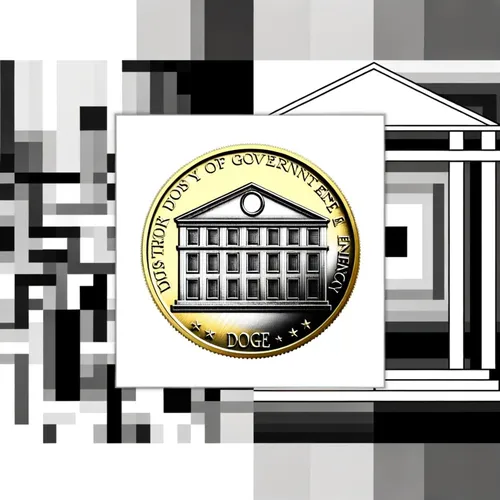DOGE Revolutionizes Government Efficiency: How Blockchain and AI Are Transforming Federal Operations in 2025
- Author
- Quiet. Please
- Published
- Thu 19 Jun 2025
- Episode Link
- https://www.spreaker.com/episode/doge-revolutionizes-government-efficiency-how-blockchain-and-ai-are-transforming-federal-operations-in-2025--66633713
Listeners, in early 2025, the White House established the Department of Government Efficiency—DOGE—envisioned as the state’s answer to bureaucratic bloat, with a mandate to modernize federal operations through advanced technologies like blockchain and artificial intelligence. The DOGE initiative, often playfully dubbed the “DOGE Coin of Bureaucracy,” has quickly become a hot topic in both government and cryptocurrency circles, blending the real-world urgency of public sector reform with the speculative energy of digital assets[1][3].
Within just a few months, DOGE claims to have saved the federal government an impressive $180 billion by slashing duplicative processes and streamlining agency workflows[3]. However, independent analysis suggests that net savings, after accounting for investment and transitional costs, stand closer to $135 billion—a figure still significant by any measure[3]. Much of this momentum draws from global trends: governments worldwide are adopting blockchain, not just for currency but also to manage and track assets, boost transparency, and cut red tape, as illustrated by recent successes in Hong Kong and the European Union[4].
The DOGE coin itself, while inspired by the digital meme currency Dogecoin, is pegged to government efficiency metrics and used within federal contracting and spending dashboards. Market analysts remain sharply divided on its future price: some project the coin reaching above $0.02 by year’s end, while others forecast a much more modest trajectory, reflecting uncertainty about crypto’s role in the sober world of public administration[2][5].
What sets DOGE apart in Washington is its attempt to merge emerging blockchain solutions with the nuts and bolts of bureaucracy. As the department experiments with tokenized contracts and AI-driven auditing, observers are watching to see if this approach can truly deliver lasting value or if it will become another ephemeral innovation. The world will know soon if the Department of Government Efficiency’s DOGE coin can be both a symbol and tool for a leaner, smarter government, or just another passing fad in the age-old struggle to make bureaucracy work for the people[1][4].
